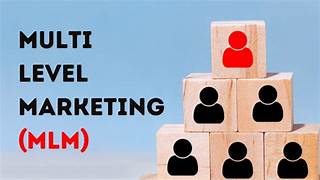Multi-Level Marketing and Its Distinctions from Other Entrepreneurial Marketing Systems
Introduction
Multi-Level Marketing (MLM) has been a widely debated business model that attracts entrepreneurs seeking financial independence. It operates on a network-based structure where distributors earn commissions through direct sales and by recruiting new members. While MLM shares similarities with traditional entrepreneurial marketing systems, it has distinct characteristics that set it apart. This article explores the fundamentals of MLM and its differences from other forms of entrepreneurial marketing.
1. Understanding Multi-Level Marketing (MLM)
MLM, also known as network marketing, is a business model where individuals sell products or services while recruiting others to join the sales network. The system enables participants to earn money through two primary avenues:
- Direct Sales Commissions: Profits from selling products directly to customers.
- Recruitment Bonuses: Earnings from commissions based on the sales made by recruits (downline members).
Key Features of MLM:
- Tiered Compensation Structure: Earnings increase as a distributor recruits more members and expands their network.
- Emphasis on Recruitment: Success often relies on growing the distributor base rather than just selling products.
- Personalized Selling Approach: Products are marketed through word-of-mouth, social media, and direct contacts.
- Low Startup Costs: Many MLM companies require a small initial investment to purchase starter kits or inventory.
2. Distinctions Between MLM and Other Entrepreneurial Marketing Systems
Entrepreneurial marketing encompasses various strategies used by businesses to reach consumers. Below are key differences between MLM and other forms of marketing:
a. MLM vs. Traditional Direct Selling
- MLM: Encourages recruitment of salespeople, creating multiple earning levels.
- Direct Selling: Focuses on individual sales without requiring recruitment.
- Example: Avon allows representatives to sell products without building a team, whereas Amway encourages network expansion.
b. MLM vs. Franchise Business Model
- MLM: Involves independent distributors selling products without owning a business location.
- Franchise: Requires an upfront investment to operate under an established brand with structured operations.
- Example: McDonald’s franchise owners follow corporate guidelines, while Herbalife distributors operate independently.
c. MLM vs. Affiliate Marketing
- MLM: Pays commissions on both personal sales and those generated by recruits.
- Affiliate Marketing: Provides a commission per sale without requiring recruitment.
- Example: Amazon Associates earn commissions on sales without building a downline network.
d. MLM vs. Pyramid Schemes
- MLM: Offers tangible products/services and legally operates within regulatory guidelines.
- Pyramid Scheme: Focuses on recruitment fees with no legitimate product sales, leading to financial collapse.
- Example: Companies like Tupperware sell actual products, whereas illegal schemes solely rely on new member investments.
3. Benefits and Challenges of MLM
Advantages:
- Low Entry Barriers: Requires minimal investment compared to traditional businesses.
- Flexible Work Structure: Participants control their schedules and business growth.
- Passive Income Potential: Successful distributors earn from both sales and downline commissions.
- Personal Development: MLM fosters skills in sales, leadership, and networking.
Challenges:
- High Dropout Rate: Many individuals struggle to achieve profitability.
- Market Saturation: Growth becomes difficult when too many sellers operate within the same network.
- Legal Scrutiny: Some MLM models border on pyramid schemes, raising regulatory concerns.
- Reputation Issues: Public skepticism due to past fraudulent MLM cases.
Conclusion
Multi-Level Marketing offers an alternative entrepreneurial path for those seeking financial independence through direct selling and network expansion. While it shares similarities with other marketing systems, its tiered compensation structure and recruitment focus make it unique. However, potential participants must critically assess the risks and opportunities before committing to an MLM venture. Understanding these distinctions helps entrepreneurs choose the most suitable marketing strategy for their goals.


